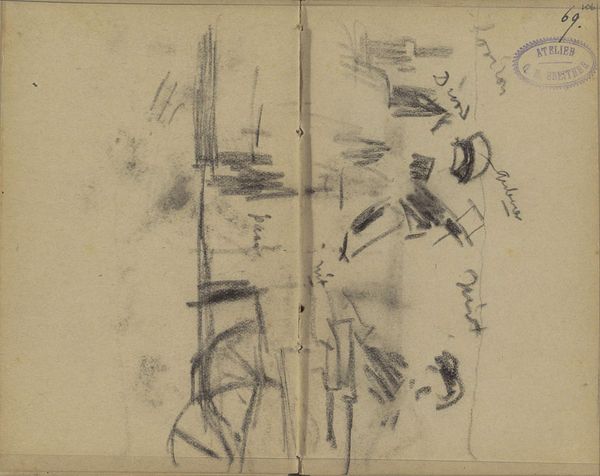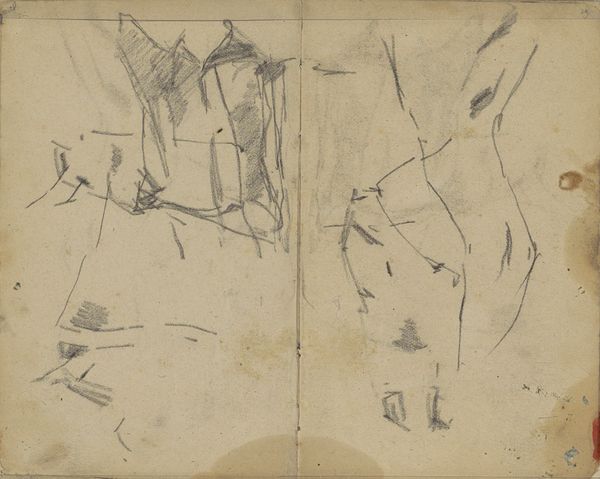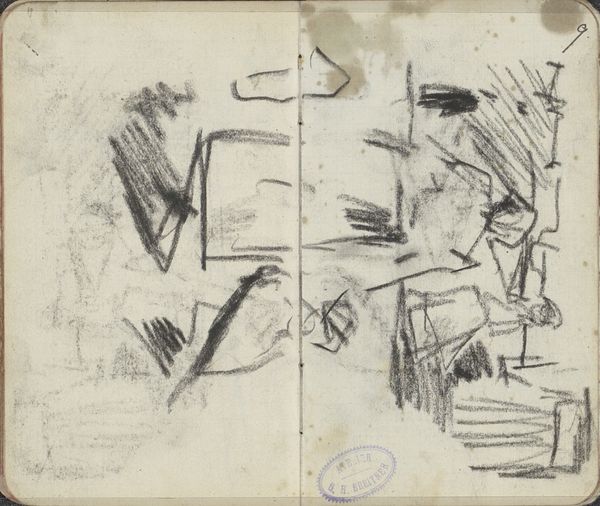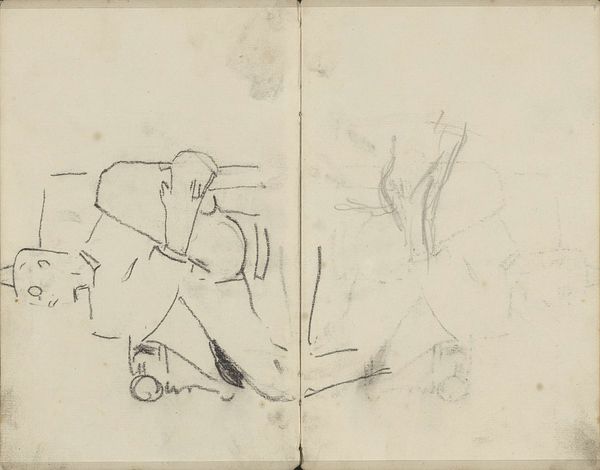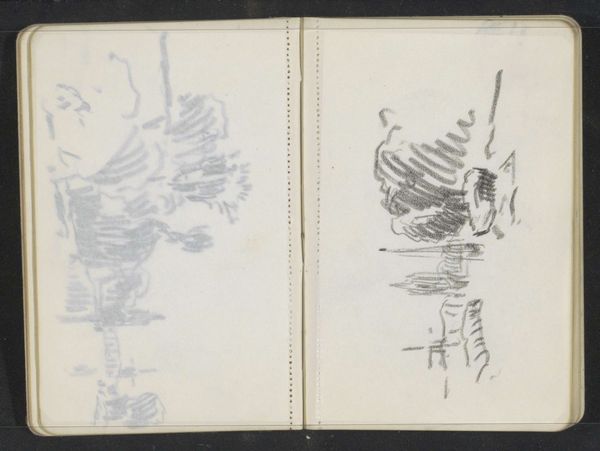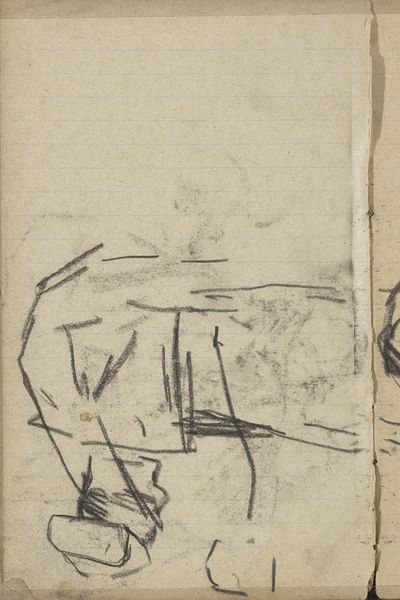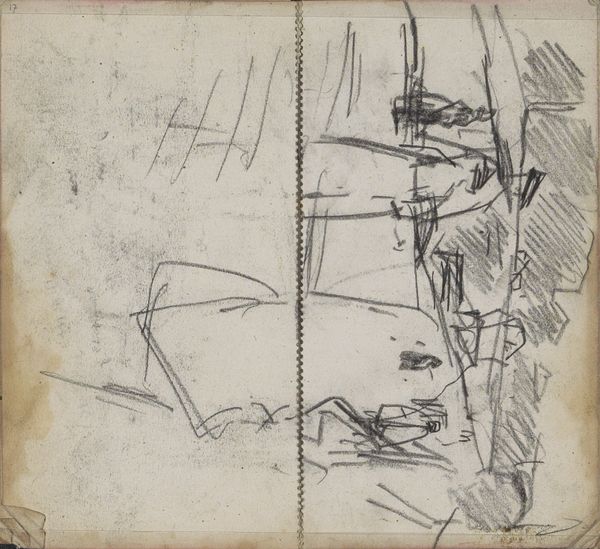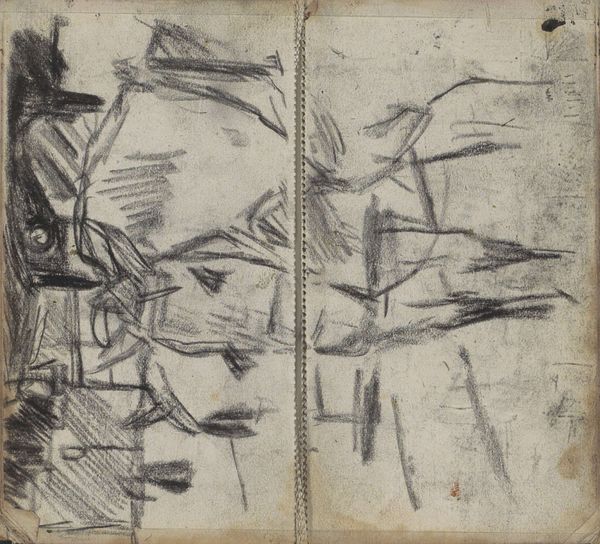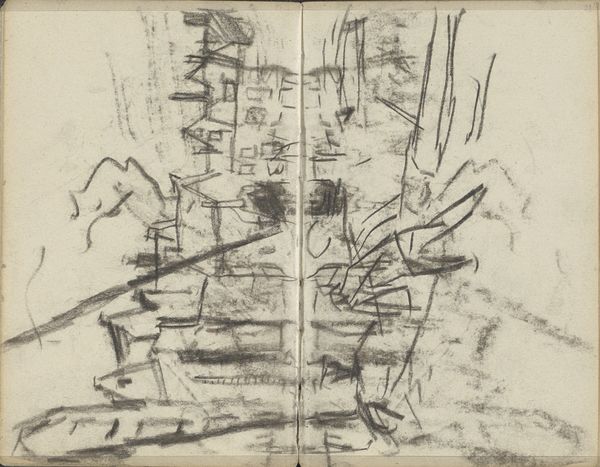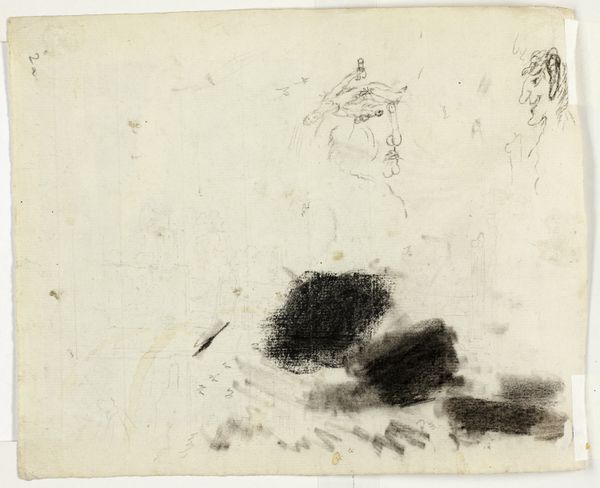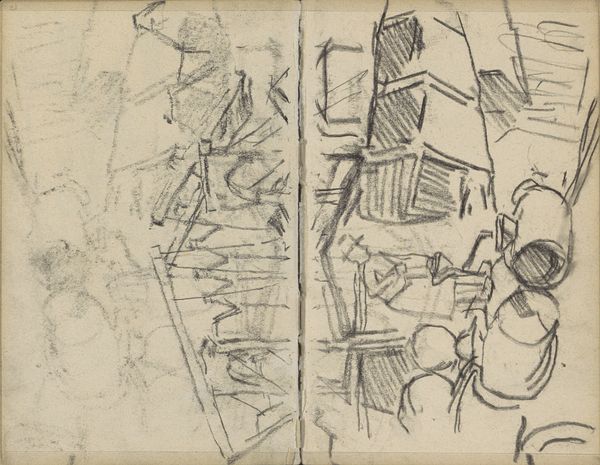
Copyright: Rijks Museum: Open Domain
Editor: Here we have George Hendrik Breitner’s “Figuurstudies,” created around 1893 using charcoal on paper. It almost feels like a glimpse into an artist’s sketchbook, all rough lines and hazy forms. What stands out to you when you look at this, especially considering the historical context? Curator: The sketch truly is like a keyhole view into Breitner’s artistic process. Given the socio-political climate of the late 19th century, Breitner’s choice of subject and style is quite telling. Amsterdam, at that time, was a rapidly changing city. There was societal awareness of poverty and industrial changes that Breitner illustrates in his imagery through capturing everyday life of the common man and woman in dark and gritty atmospheres. Editor: So, even this quick sketch reflects that? It’s interesting because at first glance, it just looks like studies. Curator: Precisely. Breitner's sketches, though seemingly spontaneous, reveal a conscious effort to represent the realities he saw around him. Charcoal as a medium lent itself well to depicting fleeting moments and the often-grimy urban landscape, in contrast to idealized, heroic paintings displayed by the academy. This is a rejection of a type of visual narrative. The Rijksmuseum preserves artworks like this for that particular reason, preserving cultural records and historical references of what society may wish to ignore. Do you think Breitner's studies had political or social value? Editor: That’s a great question! Considering the shift you've outlined, towards art depicting contemporary realism and its purpose in reflecting a different cultural, socio-economical narrative...then yes, I would suggest there's immense value! I never would have considered that initially. Thanks for pointing it out! Curator: The point isn't simply if his artwork had or had not social and political value, but its effect on societal narratives and political symbolism and what they represent within historical record. I’m glad we could think about that today.
Comments
No comments
Be the first to comment and join the conversation on the ultimate creative platform.
